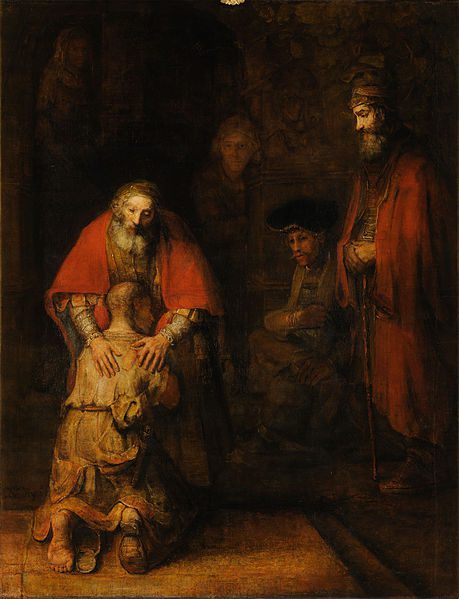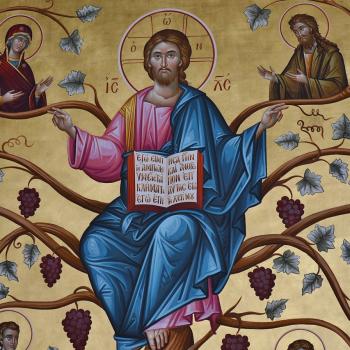
Two new articles went up today on the moribund and perpetually static website of the Interpreter Foundation:
““Our Great God Has in Goodness Sent These”: Notes on the Goodness of God, the Didactic Good of Nephi’s Small Plates, and Anti-Nephi-Lehi’s Renaming,” written by Matthew L. Bowen and Pedro Olavarria
Abstract: Anti-Nephi-Lehi’s speech (Alma 24:7–16) reveals multiple allusions to significant texts in Nephi’s small plates record. Thus, when he declares “I thank my God, my beloved people, that our great God has in goodness sent these our brethren, the Nephites, unto us to preach unto us,” he appears to allude to an inclusio that bookends the two books of Nephi’s small plates record which emphasizes the “goodness” of God as a theme. Anti-Nephi-Lehi’s description of his ancestors as “wicked fathers” appears to deliberately contrast Laman, Lemuel, and the sons of Ishmael with Nephi’s “goodly parents” in 1 Nephi 1:1. The name Nephi constitutes a key element in Anti-Nephi-Lehi’s own name, a name honorifically bestowed on him as a throne-name by his father. In view of the probable etymological origin of Nephi as Egyptian nfr (“good,” “goodly,” “fair”) and its evident, persistent association with “good” among the Nephites, Anti-Nephi-Lehi’s naming and the introduction to his speech deserve closer examination. This article explores the possible significance of this naming in conjunction with the Lamanites’ reception of divine “goodness” in the contexts of Nephite/Lamanite history and the Lamanite conversion narratives.
“Interpreting Interpreter: Naming the Good,” written by Kyler Rasmussen
This post is a summary of the article ““Our Great God Has in Goodness Sent These”: Notes on the Goodness of God, the Didactic Good of Nephi’s Small Plates, and Anti-Nephi-Lehi’s Renaming” by Matthew L. Bowen and Pedro A. Olavarria in Volume 61 of Interpreter: A Journal of Latter-day Saint Faith and Scholarship. All of the Interpreting Interpreter articles may be seen at https://interpreterfoundation.org/category/summaries/. An introduction to the Interpreting Interpreter series is available at https://interpreterfoundation.org/interpreting-interpreter-on-abstracting-thought/.
The Takeaway: Bowen and Olavarria suggest that Anti-Nephi-Lehi alludes strongly to Nephi in Alma 24, not just with his own name, but with references to goodness and other concepts that Nephi uses to bookend his record in the small plates—goodness which represents the doctrine of Christ.

Not a few, I think, will find inspiration and comfort in this moving article by my friend Joseph Grenny. I highly recommend it: “Jacob’s Answer to Parental Despair.” He refers in his article to The Other Side Academy, which is an absolutely marvelous project. We traveled to Egypt with Joseph and his wife and daughter and some of the leaders of The Other Side Academy back in January. It was a great experience — for us, anyway.

A few days ago, I posted an entry here called “The Earliest Kerygma,” in which I summarized some current scholarly thinking about the presence, in 1 Corinthians 15, of a quoted early-Christian creed (“so we preach, and so ye believed” [15:11]). The topic is important for several reasons. One of them, and the one that I emphasize, is that, if the creed (being quoted) pre-dates 1 Corinthians itself — which is already pretty early (ca. 53-54 BC) — it must be older than 1 Corinthians. Accordingly, it gives us a glimpse into the very earliest Christian teaching. And, interestingly enough, that earliest teaching appears to include the resurrection of Jesus Christ — indicating that the resurrection is unlikely to be a late, slowly developed legend.
But the opening verses of 1 Corinthians 15 aren’t the only creed-like passage in the New Testament.
Another creed-like text exists, according to many contemporary scholars, in 1 Timothy 3:16, which was probably written around AD 62-64). This is a passage in which the action of preaching and the response of believing are both included within the formulation itself:
God was manifest in the flesh, justified in the Spirit, seen [ὤφθη] of angels, preached [ἐκηρύχθη] unto the Gentiles, believed [ἐπιστεύθη] on in the world [ἐν κόσμῳ], received up [ἀνελήμφθη] into glory.
This single verse summarizes the earthly ministry of Jesus from the very beginning in his birth or incarnation all the way up to his ascension. Moreover, it appears to proceed in chronological order, with the ascension occurring in final position. With that in mind, the appearance to “angels” most probably refers to the angels, the guardians at the tomb, of the Easter narrative. (Of course, the Greek word ἀγγέλοις [“angels”] can refer to human “messengers,” as well.)
Paul’s epistle to the Romans (written ca. 55-57 AD) also contains several statements that are now generally recognized by modern scholars as creed-like formulae. Among these are the following:
Concerning his Son Jesus Christ our Lord, which was made of the seed of David according to the flesh; And declared to be the Son of God with power, according to the spirit of holiness, by the resurrection from the dead. (Romans 1:3-4)
Who was delivered for our offences, and was raised again for our justification. (4:25)
It is Christ that died, yea rather, that is risen again, who is even at the right hand of God, who also maketh intercession for us. (8:34)
If thou shalt confess with thy mouth the Lord Jesus, and shalt believe in thine heart that God hath raised him from the dead, thou shalt be saved. (10:9)
Each of these passages includes mention of Christ’s resurrection, which seems to show that the early Christian movement saw his resurrection as an essential element of its faith. In fact, Romans 10:9, the last passage cited above, suggests that individual and communal “confession” of the resurrection of Jesus was fundamental.
Another such passage occurs in 2 Timothy 2:8 (AD 62-65), in which the author admonishes his reader(s) to
Remember that Jesus Christ of the seed of David was raised from the dead according to my gospel.
That King James Version rendition of the original Greek is a good one:
Μνημόνευε Ἰησοῦν Χριστὸν ἐγηγερμένον ἐκ νεκρῶν, ἐκ σπέρματος Δαυίδ, κατὰ τὸ εὐαγγέλιόν μου·
But the New International Version of 2 Timothy 2:8 seems to make the creedal character of Paul’s exhortation more plainly obvious:
Remember Jesus Christ, raised from the dead, descended from David. This is my gospel.
Again, the resurrection of Christ from the dead is regarded as essential to what the author calls “my gospel” (τὸ εὐαγγέλιόν μου). It doesn’t appear to be a late add-on or afterthought.

















